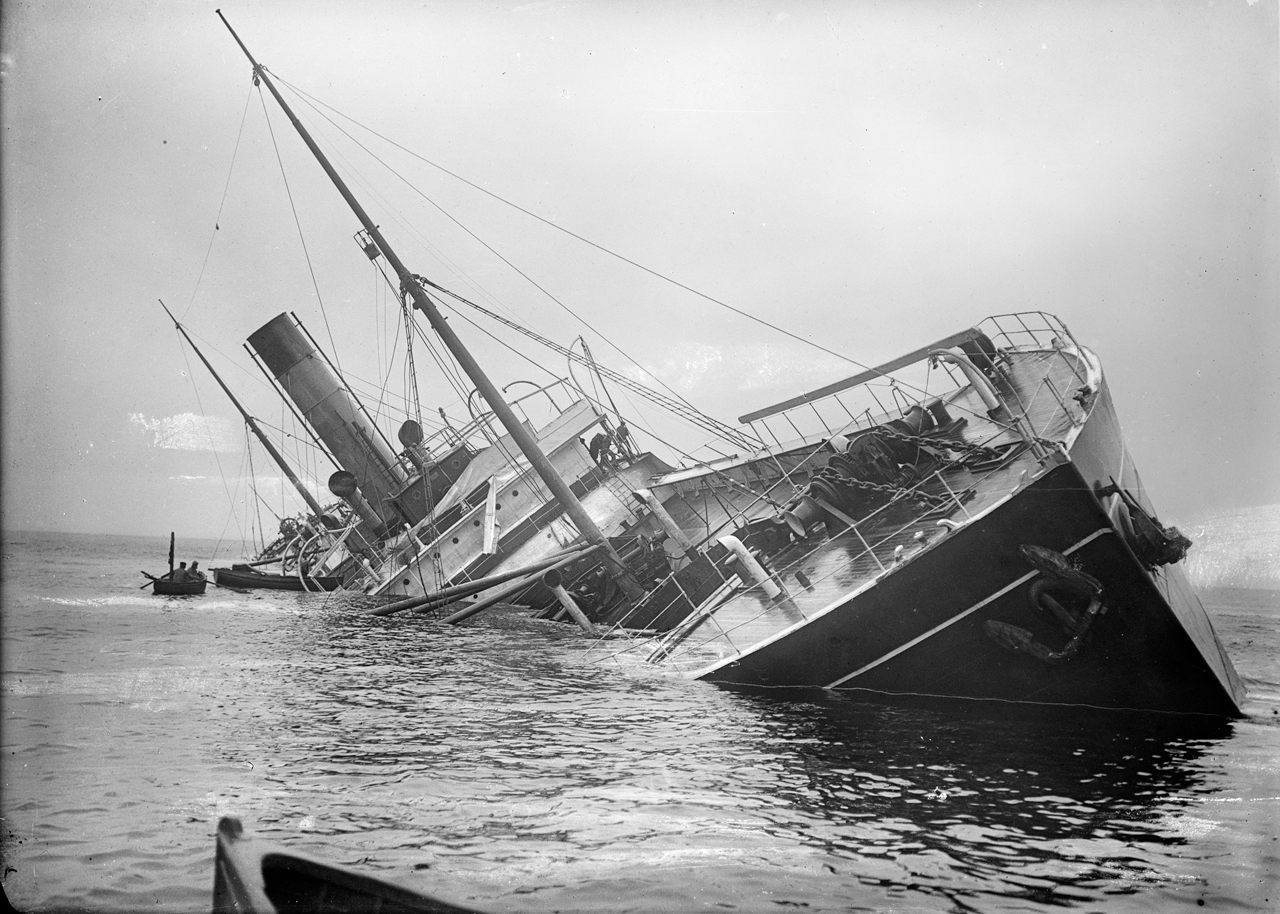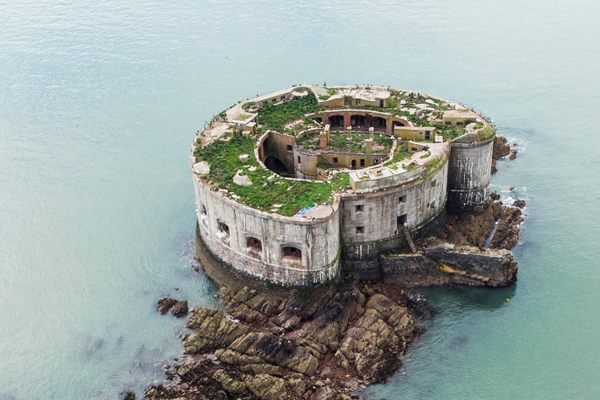One English Family Took Photos of Shipwrecks for More Than a Century
Now it’s the negatives themselves that need to be saved from time and the elements.
The waters off the coast of southwestern England are notoriously treacherous. For centuries, sailors who attempted to navigate the currents found themselves dashed against the rugged coastline of Cornwall and entrapped by the submerged rocks that guard the Isles of Scilly; some 1,000 vessels are believed to lie beneath the waves around the islands today. Thanks to one family—five generations of the Gibsons of Scilly—there is a photographic record of hundreds of these dramatic shipwrecks and the heroic efforts undertaken by locals to save the crews and retrieve their cargo.
“Within the photographs, you have stories of rescue and salvage and plunder,” says Jeremy Michell, a curator at the National Maritime Museum in London. A decade ago, the museum acquired about 1,800 images from the family at auction. That’s when a new story of rescue began: the glass and film negatives, some more than 140 years old, were rapidly deteriorating. Something had to be done to preserve the history the Gibson family had captured, often in harsh and dangerous conditions.

“The glass plates came to us in the original wooden boxes that would have been used to dry the plates,” says Emmanuelle Largeteau, a conservator at the museum. “You could hear the glass plates moving a bit, which was a little bit scary.” The ships in the photos had been destroyed by water—and the negatives faced the same threat; moisture had caused some of them to grow mold. Cleaning the images of this surface mold and more than a century of dust, dirt, and fingerprints was the first step for Lauren Ashley-Irvine, a specialist in photographic preservation who worked with the museum for four months. The more challenging undertaking was repairing glass plates that had broken—Ashley-Irvine sandwiched the remaining fragments of the images between new glass plates and secured the edges with tape, which also halted the deterioration caused by the chemicals used to create the images in the first place.
John Gibson and his sons Alexander and Herbert began photographing ships that wrecked on the shores of Scilly and Cornwall in 1869. John, who was born on the Isle of Scilly in 1827, had been a sailor by trade before establishing himself as a photographer in the 1860s. His sons became his apprentices. Together, the Gibsons were the breaking-news photographers of their day. They carted their unwieldy equipment—essentially a portable darkroom of sorts—to the beaches and found themselves navigating the rocky cliffs or piloting rowboats through the waves to get their shots, which they sold to newspapers, insurance investigators, and the curious public. Later, Alexander’s son James continued the tradition. Then his son Frank did the same, followed by Frank’s daughter Sandra. The collection was sold after Frank’s death in 2012.

That remarkable 143-year span makes the collection an invaluable window into the history of shipbuilding—and the history of photography itself. In the archive there are images created by the wet-plate process that was popular in the 1870s, as well as images created by the dry-plate process, an easier undertaking that the Gibsons began to use in the 1880s. Later came nitrate film, which was less fragile than glass plates, but deteriorated quickly (and was highly flammable), and then cellulose acetate film in the early 20th century.
Each medium presented unique challenges for the conservators. The glass plates, for instance, were prone to separation of the glass and the layer of chemicals that created the image, creating a trippy rainbow effect. In the worst of those cases, the curling and torn emulsion layers had to be carefully pieced back together and reaffixed to the plates. Still, “We had more trouble with the more modern [photographic processes] than the older ones because of the instability of the materials,” says Largeteau.
The conservators cannot restore the images to their original state, nor do they really feel compelled to. “That is impossible, and we want to keep all that history,” says Largeteau, “so our main goal is stabilization.” Of course, even the year-long effort to preserve the Gibson collection isn’t a permanent solution. The images will continue to change with time. That’s why the museum is also working to digitize the entire collection.

In addition to the expected interest from historians, the museum has seen curiosity about the collection from the general public—just as in John Gibson’s day. “They might have a personal relationship with the ship or the event or the location,” says Michell. “Other people just like them because they are beautiful photographs.”
And they are, despite the devastation they capture: Aboard a nearby sailing ship, one Gibson caught an intimate scene of the damage done to Trooper when it collided with a steamer near Penzance Harbour in 1902; just above the waterline, someone has tried to repair the overwhelming destruction with a few wooden boards. On Samson Island, the photographer turned his lens not to the foundering ship but to a collection of cows, all rescued from \Minnehaha in 1910, grazing on the sparse seaside grass. (The photo of the rescue itself is both poignant and funny.) And from the top of a cliff near Gurnard’s Head on the north coast of Cornwall, one image shows the proud, upright masts of Mildred, jibs still set, though the schooner’s hull had completely disappeared into the cove.
“The photographers were not just photographers,” says Michell. “They were photographic artists.”































Follow us on Twitter to get the latest on the world's hidden wonders.
Like us on Facebook to get the latest on the world's hidden wonders.
Follow us on Twitter Like us on Facebook